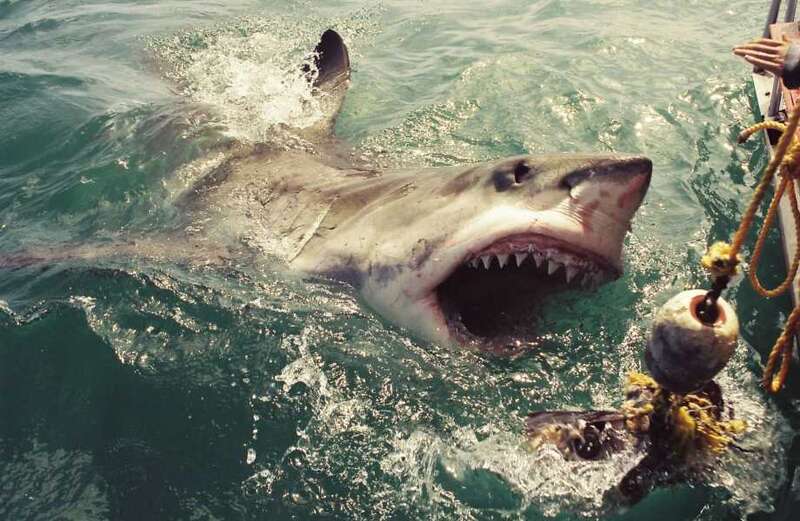A FEARLESS diver has devoted his time to getting up-close and personal with the most terrifying beasts of the ocean.
Christian Kemper, 49, is on a mission to document the man-killing creatures and armed with a camera he's been reaching right into the jaws of great white sharks.



A German photographer, journalist and diver-extraordinaire has been photographing great whites so closely you can count every single tooth.
The intimate shots were taken in both Guadalupe Island in Mexico and False Bay in South Africa - two areas where great whites are in abundance.
However, the 49-year-old is on a mission to dispel the myths that sharks are man-hunting creatures to be feared and instead advocates they are "misunderstood".
 Man fined £165 after outraging the internet by dying puppy to look like Pikachu
Man fined £165 after outraging the internet by dying puppy to look like Pikachu
One image shows a 17ft-long great white shark lunging from the dark blue waters and living up to its name by baring its great white gnashers for the camera.
In another image, the photographer was so close to the average 3,000-pound shark beneath him that his palm was pressed up against the shark’s snout.
Kemper doesn't believe in snapping the beasts from the safety of a cage and instead often dives freely. "The cage cannot create the same experience," he says.
“I didn't choose to dive without a cage because I'm looking for an adrenaline rush, but because I wish to understand sharks better.
“People who want to study shark behaviour must have the courage to get up close and personal with the predatory fish," he explains.
“As a result, many shark divers seek a more personal encounter with sharks than observing them through thick steel bars.
“They want to learn more about an animal that is so often misunderstood and that few of us really know anything about.”
Kemper’s close encounter with the sharp-toothed fish only enhanced his respect for the shark species.
He desperately wants to change people's perceptions of the beasts of the sea and instead show their "beauty and power".
In turn, he hopes this will allow his work to "appeal to a different audience than most authors".
 Dog who 'always melts hearts' with his smile hopes to find a loving family
Dog who 'always melts hearts' with his smile hopes to find a loving family
“Sharks don't have a particularly good reputation. Their advocates are few and far between," he explained.
“So I embarked on a mission with my camera and notebook to show that sharks are irreplaceable.”
The shark-loving photographer was working for the white shark research Institute in South Africa, while he took a scuba diving trip to Guadalupe Island in Mexico.
To get his stellar shots, he would often have to be thousands of feet away from the shore.
From there, he was able to get well-acquainted with the much-feared species.
“I got so close I was able to touch the Sharks, with them being around three to nearly six-meters long each.”
Other fearless diverse have managed to take breathtaking photos of the monsters in these areas, including a 20ft great white shark considered to be the biggest ever prowling the ocean.
The gigantic monster, known as Deep Blue, sent ripples across the world when she was first caught on camera in 2014 off the coast of Guadalupe Island.
However, having encounters with these monsters carries immense danger.
Also off the coast of Mexico, one fisherman had his head ripped off his body by a 19ft great white in January,
Manuel López, in his 50s, was diving for shellfish when he was killed by the beast in the first fatal shark attack of the year.






































